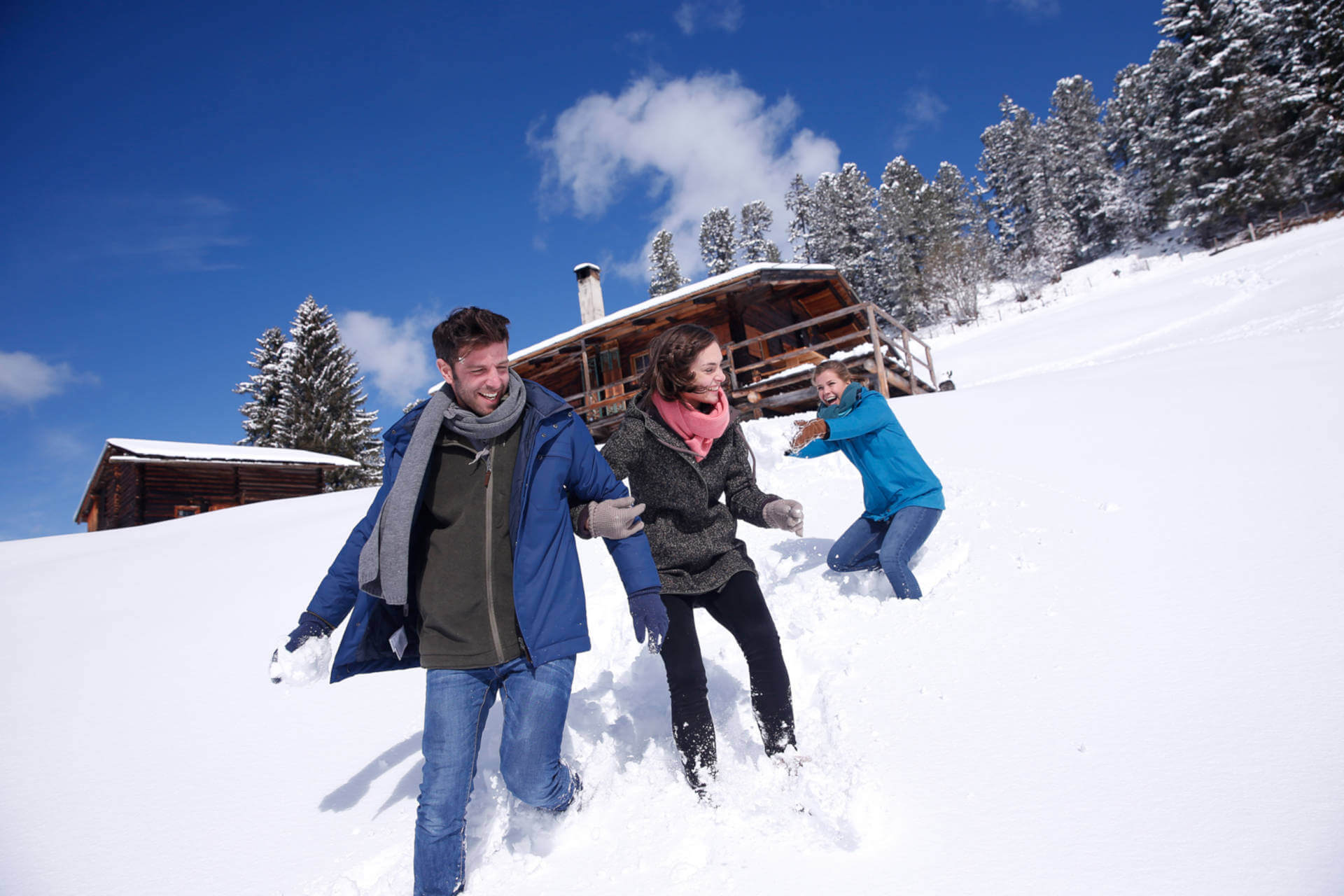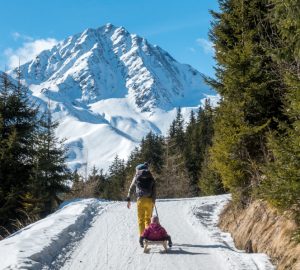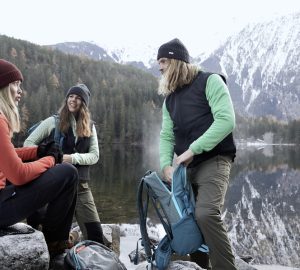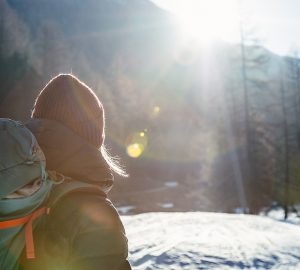Outdoor activities in winter are healthy and keep your head clear. How to get motivated best? Which clothes suit best for outdoor activities in cold weather and how to recover most effectively after one freezing outdoor-day? Here, we’ll reveal a few splendid tips.
Outdoors in winter: Physical activity is both healthy and keeps you fit – even in cold weather
The long gloom in winter, radiator-air and a lack of exercise make you feel tired, lazy and, in addition, are less health-promoting. That’s why outdoor activity is the right thing to do!
Whether it’s ski touring, cross skating, snowshoeing or – if there’s no snow – mountain biking: outdoor activities increase the cardiovascular system’s activity. This will fight being tired all day and strengthen your infection resistance. Plus, the endorphin level rises – a powerful remedy for winter blues.
Another positive effect of outdoor activities in winter: when spring comes, you’re already in perfect shape to start the upcoming season with full strength.
Interesting too: Hiking in the rain – A serious suggestion
How to motivate yourself best?
As soon as the morning sun is beaming down and the snow under your feet is scrunching, you’ll forget about the freezing cold of those January mornings. You simply have to go outside – into nature! Anyway, how to motivate yourself if the weather indicates staying at home and spending one lazy day on the couch instead of going outside?
The best way to fight one’s weaker self is to set up specific goals which one eagerly should try to accomplish. But don’t put to much on your plate. It doesn’t have to be a one-day-walk – in cold, humid conditions. Even a decent walk can have a positive impact on both your fitness and wellbeing, which you probably haven’t expected at the beginning.
Suitable clothes for your outdoor-fun on chilly winter days
As a matter of fact, one loses the most heat at the very top of the body – the head. Thus, you definitely should wear a beany if you’re going outside into the cold. Thereby you’re conserving more energy for the body to keep your trunk and – more importantly – your limbs nicely warm.
Additionally, you need to consider what you always have to consider in whatever season you’re in: several layers! Especially in the morning, in the evening and during breaks when you’re not moving you need warm gear. Therefore, you want to bring a wadded or a down jacket. Those are light to carry and easily stowed away. When there’s bright sunshine at noon and you’re moving anyway you simply doff it and put it in your backpack to avoid sweating unnecessarily.
How much layers to wear highly depends on the type of sport, the intensity of movement and your subjective perception of cold. No matter what, functional clothes for outdoor activities in winter are a must as they take the moisture away from one’s skin. Consequently, you’ll be all dry within no time, even though, you’re sweating. Cotton is the wrong choice for it’s not leading away humidity and you run the risk to become hypothermic.
Interesting too: Hardshell or softshell jacket? Which outdoor jacket is right for your expedition?
The right way of breathing keeps away a cold
Equipped with the right gear, you’re good to go. And, even though, you’re exercising in cold weather you don’t have to fear a cold. The important thing to focus on is the right way of breathing – which is especially relevant for more exhausting outdoor activities.
The colder the air the less humidity it contains. The paranasal sinuses as well as the sensitive bronchia require moistures air. Usually, this is achieved by the nasal mucous membranes. They heat up the inhaled airstream and cause the needed humidity.
If you’re struggling and start inhaling with your mouth your airways are exposed to the dry, cold air unprotected. That’s when they’re irritated more than usual. Pathogens now can enter more easily causing an inflammation of the airways or an annoying cough.
So, try to breath with your nose instead, although, it’s exhausting. It cleans, heats up and wets the air. That way, pathogens are effectively restrained. A thin scarf, wrapped around your head and nose, may be supportive too.
Even on cold outdoor days you should drink enough – preferable something warm
As soon as you feel energy leaving you it’s time for a break. If there’s no cozy cabin at hand you can simply choose a wind-protected spot outside for pausing.
Definitely bring a warm beverage for your outdoor winter tour. Tea in a shatterproof thermal jug has proven itself particularly handy. With something warm in your belly you’ll feel revived and ready for more outdoor fun.
Proper recovery after a cold outdoor day
After an exhausting outdoor day in the cold one thing is most important: rest. Give your body time to recover and reward yourself with something you like. A nutritious diet is important for your muscles to rally and to top off your energy reserves.
If you feel a stiffness emerging, you’d better try to slow down a bit and avoid giving it everything already next day. Enough sleep is equally crucial – both for training effect and for bringing a sustainable effect from your outdoor experience into daily life.
A visit to a sauna is additionally helpful for regaining your strength: This is not only due to the comfortable warmth – the heat promotes the blood circulation and supports your muscles degrading waste material caused by physical activity.
With keeping these tips in mind your outdoor activity will be great fun even on chilly days and you’ll stay healthy and fit throughout winter.







